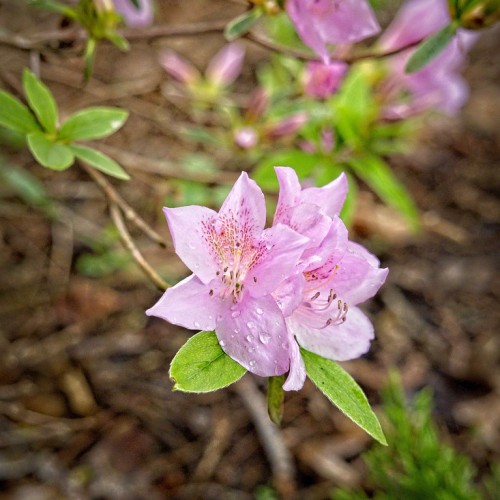
evergreen azalea
Rhododendron 'Conlep' AUTUMN TWIST
Cycle:
Perennial
Watering:
Average
Hardiness Zone:
7 - 9
Flowers:
Flowers
Sun:
Part shade
Leaf:
Yes
Growth Rate:
Low
Maintenance:
Moderate
Poisonous To Pets:
Yes
Care Level:
Medium
watering
Water evergreen azalea (Rhododendron 'Conlep' AUTUMN TWIST) well after planting, then continue to water every 2-3 days (depending on the weather conditions) until the plant is established. After that, water the plant deeply but infrequently during the active growing season (spring and summer). When watering, apply the water slowly so it can soak down to the roots. During extreme heat or periods of drought, you may need to water more often. After the active growing season, reduce watering. A light rainfall is usually enough to keep the plant hydrated during the winter months.
sunlight
The evergreen azalea (Rhododendron 'Conlep' AUTUMN TWIST) thrives in full sun or partial shade, and can tolerate either south or east facing exposures. For optimal growth, 6 to 8 hours of direct sunlight is ideal, although it will do well in dappled shade most of the day. The key is to find the right balance, ensuring the plant receives enough sunlight to carry out photosynthesis while avoiding excessive exposure which could cause the foliage to become scorched or dehydrated. It's best to provide the most sunlight in the morning hours, when cooler temperatures can help to protect the plant from heat damage.
pruning
Evergreen azalea (Rhododendron 'Conlep' AUTUMN TWIST) should be pruned in late winter to early spring (February-March). Pruning time is before new growth appears and usually no more than 1-third of the existing foliage can be removed. It's important to start by cutting off any dead, diseased, or damaged branches before pruning. Remove any crossing or rubbing branches, and then remove any interior branches to open up the plant and allow more light and air to reach the inside of the plant. To maintain the desired shape, making light cuts to the sides of the remaining branches is also recommended.
